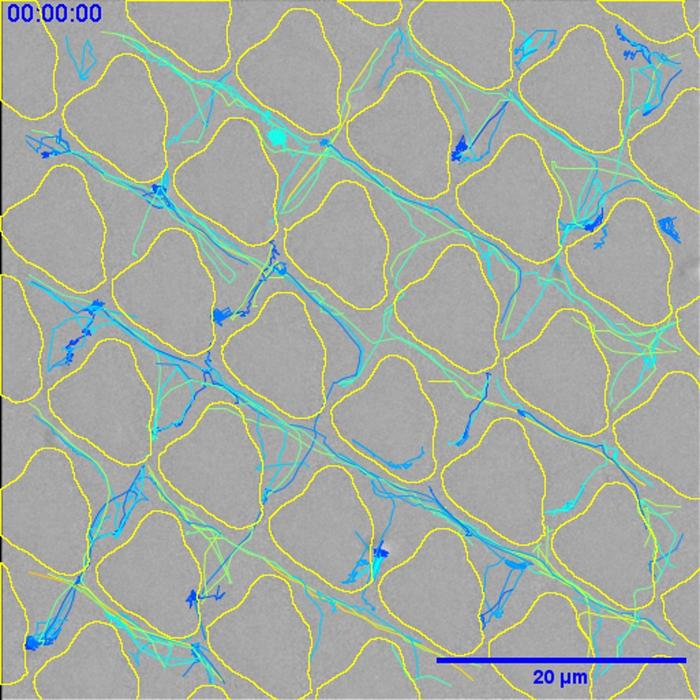In a groundbreaking advancement poised to reshape infection control in medical settings, researchers at the University of Nottingham have unveiled a novel approach to preventing bacterial colonization on plastic surfaces commonly used in medical devices. This innovative strategy harnesses precisely engineered surface microtopographies—microscopic landscape patterns—that significantly impair bacteria’s ability to form biofilms, tackling one of modern medicine’s most persistent challenges with bacterial infections linked to implanted devices.
Biofilms are complex congregations of bacterial cells encapsulated within a self-produced matrix of polymeric substances, often described metaphorically as ‘slime-cities.’ These biofilms endow bacteria with enhanced protection against host immune defenses and antibiotic treatments, rendering infections notoriously difficult to eradicate. Medical devices such as catheters, breathing tubes, and implants, all frequently made from various plastics, provide an ideal substrate for biofilm development, posing serious complications in hospital environments.
The Nottingham research team, led by molecular microbiologist Professor Paul Williams, in collaboration with polymer surface expert Professor Morgan Alexander and computational scientists, broke new ground by shifting the paradigm from chemical-based antimicrobial strategies to physical surface patterning. Their study, published in the prestigious journal Nature Communications, reveals that micro-engineered grooves and crevices on plastic surfaces can thwart bacterial attachment and subsequent biofilm formation without relying on antibiotics or antimicrobial coatings.
Using high-throughput screening methods, the researchers evaluated over 2,000 unique microtopographical patterns fabricated in different plastic materials, including polyurethane—a widely used polymer in medical device manufacture. Through this extensive combinational screening, they identified specific micro-landscapes that effectively inhibit the initial adhesion and aggregation steps crucial for biofilm establishment. Remarkably, the most effective surface pattern consisted of small crevices that physically entrapped bacterial cells, inducing them to secrete a lubricating substance.
This lubricant secretion phenomenon, which the team defines as autolubrication mediated by quorum sensing mechanisms, forms a self-generated barrier that prevents bacterial cells from adhering firmly to the device surface. Quorum sensing is the bacteria’s biochemical communication system enabling coordinated behavior once a critical population density is reached. Here, bacterial cells trapped within the microtopographical niches respond by increasing lubricant production, inadvertently sabotaging their own ability to cling and form mature biofilms.
The study’s multidisciplinary methodology combined experimental microbiology, polymer science, and machine learning algorithms to analyze and interpret the vast data generated by the pattern screening. Machine learning was instrumental in pinpointing patterns with optimal biofilm resistance, revealing design principles that transcend specific bacterial species and plastic materials. Such computational approaches accelerate discovery and pave the way for customizable anti-biofilm surfaces tailored to diverse medical applications.
Importantly, this strategy addresses long-standing issues associated with antibiotic-loaded or antimicrobial-coated devices. Chemical coatings often face drawbacks, such as inducing antibiotic resistance, finite lifespans, potential toxicity, and manufacturing complexity. In contrast, physically patterned surfaces provide a durable, passive defense mechanism without encouraging microbial adaptation. Because the micropatterns can be incorporated directly into device manufacturing processes without altering material composition, scalability and clinical translation are highly feasible.
Professor Williams emphasized the clinical implications, stating that this surface engineering method could dramatically reduce device-associated infections, which currently represent a significant burden on healthcare systems worldwide. By preventing biofilm formation at the outset, these surfaces not only inhibit bacterial persistence but also amplify host immune clearance of any residual bacteria. This dual action could lower infection rates, minimize antibiotic exposure, and ultimately improve patient outcomes.
From a materials science perspective, Professor Morgan Alexander highlights the commercial promise of this discovery, explaining that physically patterned surfaces can be retrofitted onto existing polymeric devices. The compatibility with standard plastics used in the medical industry lowers barriers to adoption, potentially translating into substantial cost savings for healthcare providers such as the National Health Service (NHS). This approach could revolutionize device safety standards by integrating biofilm resistance as an intrinsic surface property.
Expanding on these findings, ongoing funded research aims to validate and optimize these microtopographical landscapes in clinically relevant devices under real-world conditions. Collaboration with medical device manufacturers and regulatory bodies is underway to streamline pathway development from laboratory prototypes to market-ready products. The researchers are also exploring the mechanistic details of quorum sensing-mediated lubricant secretion and its universality across different bacterial strains and environmental contexts.
The implications extend beyond medical devices; such micro-engineered surfaces could be applicable in various sectors where biofilm formation causes operational challenges, including water treatment systems, food processing equipment, and marine vessels. The versatility of this strategy underscores the potential to mitigate biofilm-associated problems across diverse industries by leveraging nature-inspired physical interactions in microbial ecology.
As antibiotic resistance escalates globally, this innovative, non-chemical approach stands out as a promising intervention that redefines infection control paradigms. By shifting focus from combating bacteria with drugs to manipulating their physical environment, the Nottingham team has opened a new frontier in biomaterials science and microbiology. This research exemplifies how interdisciplinary collaboration and advanced computational techniques can accelerate breakthroughs tackling critical public health challenges.
In summary, the discovery of biofilm-resistant microtopographical surfaces offers a scalable, effective, and sustainable strategy for preventing bacterial colonization on medical devices. By exploiting bacterial communication pathways to induce self-lubricating responses, these engineered landscapes represent a pioneering leap forward in combating device-associated infections. This approach holds immense promise to reduce healthcare-associated infections, drive down costs, and improve patient safety worldwide.
Subject of Research: Not applicable
Article Title: Combinational discovery of micro topographical landscapes that resist biofilm formation through quorum sensing mediated autolubrication
News Publication Date: 18-Jun-2025
Web References: 10.1038/s41467-025-60567
Image Credits: University of Nottingham
Keywords
Biofilm inhibition, microtopography, quorum sensing, bacterial lubricant secretion, medical device infections, polymer surface engineering, antimicrobial resistance, catheter infection prevention, machine learning in biomaterials, polyurethane medical plastics, autolubrication, infection control innovation




